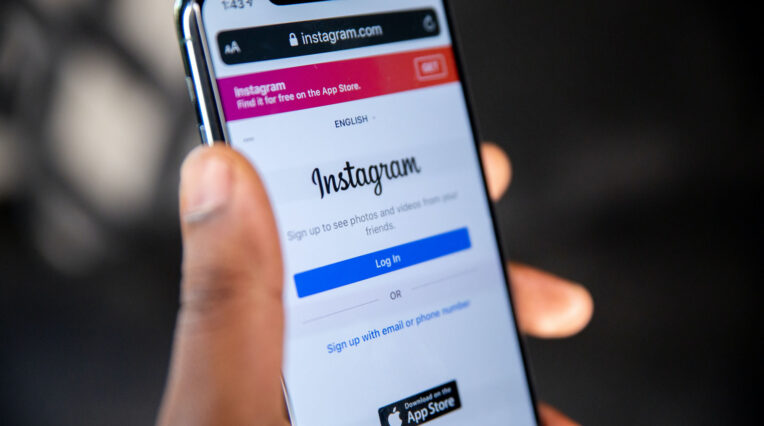25/03/2022
The evolution of healthcare marketing

In this guide, we’ll cover:
- Best practice healthcare marketing techniques
- Understanding of when and how to choose from the plethora of channels at your disposal
- Guidance on utilising personalisation to ensure you get your message into the right hands at the right time
Introduction
Healthcare marketing has changed substantially in recent years. Heightened pressures on the NHS have seen more and more patients and service users turning to the private sector, which has led to a rise in competition.
However, the industry has been slow to adjust to the changing landscape, evolving technologies and the increasing expectations of its audience.
As large businesses with a number of decision-makers, healthcare organisations have slow and complex approval processes, making it difficult to easily adapt or to utilise timely opportunities. Most organisations also face a heavy degree of concern internally about anything unknown, untested or outside the norm, as infringing any regulations could come with heavy costs and so risk mitigation is everything.
However, with the pace of change for both healthcare and marketing only set to increase, healthcare organisations need to respond, or face losing market share.
Establishing an identity
Perhaps the most essential element to marketing, and the area that we find healthcare organisations struggle most with, is establishing a distinctive identity.
Patients and service users have a wide variety of choices — more now than ever before — and without a strong identity and clear indicators of what separates you from your competitors, there is no reason for them to choose you.
Fear is holding you back
The truth is, most advertising and marketing messages wash over the general public — the vast majority won’t remember the ad at all, and those that do are highly unlikely to remember the brand it was for. This is because most branded messages are essentially saying the same things in the same way, and they all merge into one.
This is particularly true in the healthcare sector, where the array of strict rules and regulations have made organisations afraid to take even a step outside the box.
Have a look at your competitors — can you see a noticeable difference between their websites, their messaging, even their branding, and your own? Probably not. Even the most simple things have become uniform; green and blue, for example, are trusted colours — Western consumers consider blue to represent safety and associate green with health. Therefore almost every healthcare brand in the UK and Europe feature one or both in their logo and branding. Language across all healthcare marketing messages has become standardised in order to remain safe, and to satisfy the varied opinions of a range of stakeholders. So how will your audience ever separate you from your competitors, much less consider your offering superior? If you’re saying the same things in the same way, you’re essentially spending money to promote your competitors as much as yourself.
Building a voice
The good news, to reassure your board, is that being distinctive doesn’t mean being controversial or unprofessional.
We’re not suggesting you take a leaf out of Paddy Power’s book and pretend to cut down swathes of rainforest, or follow Brewdog in campaigning to get your own products banned amid health concerns. You can if you want, but we wouldn’t advise it.
Instead, your identity should communicate the core values that separate you from your competition — the things that make you unique, or better, and the things that your audience really care about. By understanding what would make someone choose your offering over a competitor’s, and what that means to them, you can craft a tone of voice and visual language that speaks to them in a memorable way.
With so many decision-makers generally involved in the approval process for healthcare marketing, it is vital to have all of these people bought into this identity, and the most effective way to ensure that is to make them part of the initial development process. At Fox&Bear, we work with our clients on creative branding workshops, which bring all the key stakeholders together to analyse the audience needs and behaviours, get to the heart of the organisation’s values and USPs, and build from this a tone of voice and messaging techniques that will resonate and be remembered, ultimately generating you results and making your marketing worthwhile.
Choosing your channels
Understanding your audience is vital to every element of your marketing strategy, from knowing what you need to say, to how to say it, and where to say it. Knowing who you need to reach will tell you where best to reach them.
Follow the data
It’s tempting, particularly when you’ve worked in an industry for a long time, to feel that you instinctively know who your audience is. Certain things are, of course, common sense — if you’re discussing prostate issues, for example, you will always be primarily talking to men aged over 40. However, when we analyse the online habits of the general public, women are far more likely to look for health information than men.
When we began a heart health awareness campaign for KIMS Hospital to coincide with National Heart Month, we started with the data the hospital had gathered on the demographics and lifestyles of the majority of their patients to understand who was most in need of the information we were creating. In addition, we looked at the people who were actively searching for this kind of information and discovered that, whilst it was primarily people aged 55 and over that were at risk for heart-related issues, it was their children (aged 30–45) who were most proactive in seeking advice and support for their parents, which made them a key secondary audience for us to target.
Beyond the data on current service users, it’s also important to understand who you want to attract in future. Understanding which services and customer bases are most valuable to you, and where you might be able to gain traction from competitors, will shape your approach to targeting and messaging.
Once you know the audience you want to talk to, put time into understanding who they are, what matters to them, and what media channels they consume. Audience personas will help you to get a more detailed understanding, and avoid broad generalisations. Whilst it’s largely true that older people still consume printed media whereas younger people tend to prefer digital, it’s also worth knowing that the fastest growing group on Facebook is the over-50s. Don’t be tempted by those broad demographic boxes — Prince William and Dizzee Rascal are both men from London in their mid-30s. The way you would want to speak to each of them may be slightly different.
Customer journey
One of the key elements to a marketing strategy is understanding the customer journey — whilst you might not think of your audience as “customers” in the traditional sense, the process is essentially the same.
In all sectors, the customer journey has become much more complex in recent years. There are multiple touchpoints that potential service users interact with before they even come into contact with your organisation, much less make a decision about which services they want to access. Healthcare has particular challenges, not least the often incredibly lengthy lead-time between their perception of a potential need and choosing a service provider, and the number of external professionals that may influence their decision.
The exact nature of this journey will be slightly different for each individual, but understanding the process that your audience goes through and the role each channel plays at that stage will help you craft a message to suit their needs.
Channel objectives
Understanding the role that each channel plays for your audience will help you shape not only the content you create for that channel, but the way that you understand its success. If, for example, you know that the role of social media is to raise awareness amongst key audiences and enhance your brand reputation for those researching service providers, you know that your measures of success for your social channels should be reach of those awareness messages amongst the key demographic and volume of reviews and recommendations generated.
Changing technology
Technology is advancing at an ever-accelerating pace, and the last few years have seen dramatic shifts both in the technology available to the healthcare industry and the ways that individuals interact with the world around them.
Being available for your audience to contact across multiple platforms is vital, and customers are increasingly preferring digital options — 65% of people prefer to use a messaging app to contact a business than to email or call. Where health issues are concerned, which could be potentially scary, embarrassing or acutely personal, being able to speak to someone in the first instance on a relatively anonymous platform like a messaging app is far less intimidating.
To accommodate increasingly busy lifestyles and mitigate the demands currently on traditional methods, a range of apps and consultancy platforms are emerging that enable users to access medical advice and support almost instantly from appropriate professionals. Platforms like Babylon Health and Push Doctor connect people with GPs 24/7 and can even arrange prescriptions sent to your door.
Video has been consuming more and more of our attention in recent years, and is projected to claim more than 80% of all web traffic by 2019. It’s not surprising, then, that marketers are investing heavily in new forms of video, from live streaming to 360 video. The opportunities with these forms of content to introduce potential service users to your staff and your facilities, not only showcasing the benefits of your organisation but helping to alleviate the fears of those scared of hospitals and healthcare professionals, are huge.
Mobile optimisation
Before you dive into the heady worlds of virtual reality or artificial intelligence, however, the key piece of technology that marketers most need to embrace, but healthcare organisations have been slowest to understand, is the humble mobile phone. We are way past the debate about whether or not we’re living in a mobile-first world — we are rapidly approaching a mobile-only world for the majority of consumers. Even back in 2014, 23% of people accessed the internet only through mobile devices and a further 37% were mostly mobile. Only 11% relied on a desktop device. Three years later, if your website isn’t mobile optimised and providing mobile users with a good experience, you’re in trouble.
40% of users will abandon a website if it takes more than three seconds to load, and a one-second delay in page response can result in a 7% reduction in conversions. So ask yourself if your site is user friendly on mobile devices, and test whether visitors can easily find and perform all key functions. Otherwise, they’ll be heading to your competitors’ sites in droves.
Make sure your navigation is clear and concise. Users want access to information more quickly on mobile, so optimising key user journeys is a good place to start. Ensure your on-site search is robust and serves accurate results, as mobile users often default to search functions to find information quickly. Make sure you include clear and simple calls to action to avoid confusion and support conversion rates.
But it’s not just users you should be concerned about: Google will soon be ranking URLs based on the mobile version of the content rather than the desktop. The ‘mobile-first’ index, which is expected to roll out in early 2018, should be an extra incentive to healthcare organisations, and early adoption could put you ahead of your competition.
Personalisation
Personalisation has become a huge part of marketing, and customers have come to expect it as standard.
94% of senior level executives believe that delivering personalisation is critical to reaching and retaining customers.
The Department of Health’s framework “Personalised health and care 2020” sets out the need for care professionals to have access to a range of data and the necessary technology in order to provide joined-up, realtime support for service users and to empower patients.
As we’ve seen in the customer journey above, patients and service users are taking greater control of their own healthcare and engaging with numerous touchpoints to find the solutions they need. Creating content to suit these specific needs and making it available through the right channels for that audience is the key to engaging potential patients and service users with your organisation.
Social media offers an opportunity for highly targeted messages, but also for genuinely personalised communication in the form of one-to-one messaging and interaction in real-time. Whereas the idea of real-time communication is terrifying for most healthcare organisations, if you can learn to embrace it this gives you a an opportunity to build a genuine relationship with a potential customer during their lengthy decision-making process.
Advertising options, across all platforms, now allow you to be highly personalised in your approach, targeting users based on their specific location or particular behaviours, and crafting a message to suit a defined audience.
GDPR
The possibilities, however, are not quite endless. The rules on how organisations collect, store and use data are about to become much stricter when the General Data Protection Regulation (GDPR) comes into effect in May 2018.
The GDPR will have an impact on how we collect data, record consent and how we treat and store the data we’ve collected. When asking for data, you will need to use plain, unambiguous language that makes it clear to the subject why you need the data. You should be really clear on what you will do with their data, and what they will receive. You will also need to make sure that this statement is placed separately to any other terms and conditions or formal documentation so that it stands out. We’d recommend being clear on who you share data with, security measures you have in place and how long you will keep data for, as these details all help to build trust between your organisation and potential customers.
Pre-ticked boxes or assumed consent are a thing of the past — a user must take affirmative action and knowingly opt in to any communications, and consent cannot be automatic as part of wider activity. You will also need to be able to prove that the individual has consented and record when and how they did.
There will be particularly tight restrictions on the use of “special data” categories, which include data on health conditions, ethnic origin, genetic data and many other areas that are likely to be relevant to healthcare organisations.
Make sure you’re up to speed on what’s required before the rules come into force — the penalties will be heavy and merciless.
Conclusion
Healthcare marketing is a challenge — but an exciting one! Embrace the variety of opportunities out there and weave them into the fabric of your marketing strategy.
Creating a long-term plan based on accurate data and audience insights will help you to develop effective messaging, and create an innovative plan that all stakeholders are on board with (and help you avoid going through the lengthy approvals process every month when you need a new campaign).
- Don’t let fear hold you back from having a distinctive brand “personality”
- Choose the right channels based on where your audience spend time and what they care about
- Embrace technology, but not just for the sake of it — have a goal in mind and measure it
- We all expect a “personal” communication journey and healthcare is no different — make sure you understand the possibilities, and the restrictions





